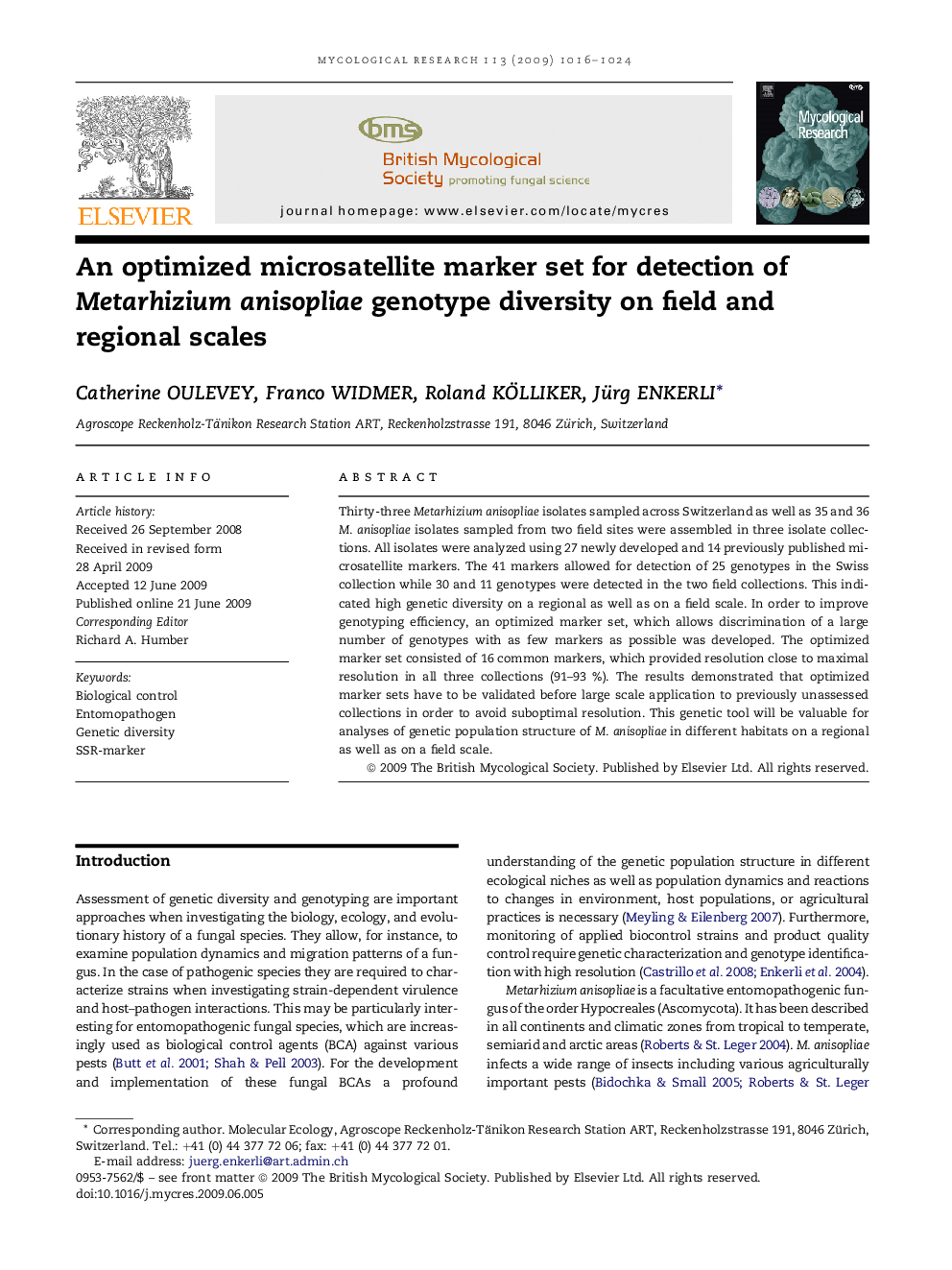| Article ID | Journal | Published Year | Pages | File Type |
|---|---|---|---|---|
| 4357566 | Mycological Research | 2009 | 9 Pages |
Thirty-three Metarhizium anisopliae isolates sampled across Switzerland as well as 35 and 36 M. anisopliae isolates sampled from two field sites were assembled in three isolate collections. All isolates were analyzed using 27 newly developed and 14 previously published microsatellite markers. The 41 markers allowed for detection of 25 genotypes in the Swiss collection while 30 and 11 genotypes were detected in the two field collections. This indicated high genetic diversity on a regional as well as on a field scale. In order to improve genotyping efficiency, an optimized marker set, which allows discrimination of a large number of genotypes with as few markers as possible was developed. The optimized marker set consisted of 16 common markers, which provided resolution close to maximal resolution in all three collections (91–93 %). The results demonstrated that optimized marker sets have to be validated before large scale application to previously unassessed collections in order to avoid suboptimal resolution. This genetic tool will be valuable for analyses of genetic population structure of M. anisopliae in different habitats on a regional as well as on a field scale.
